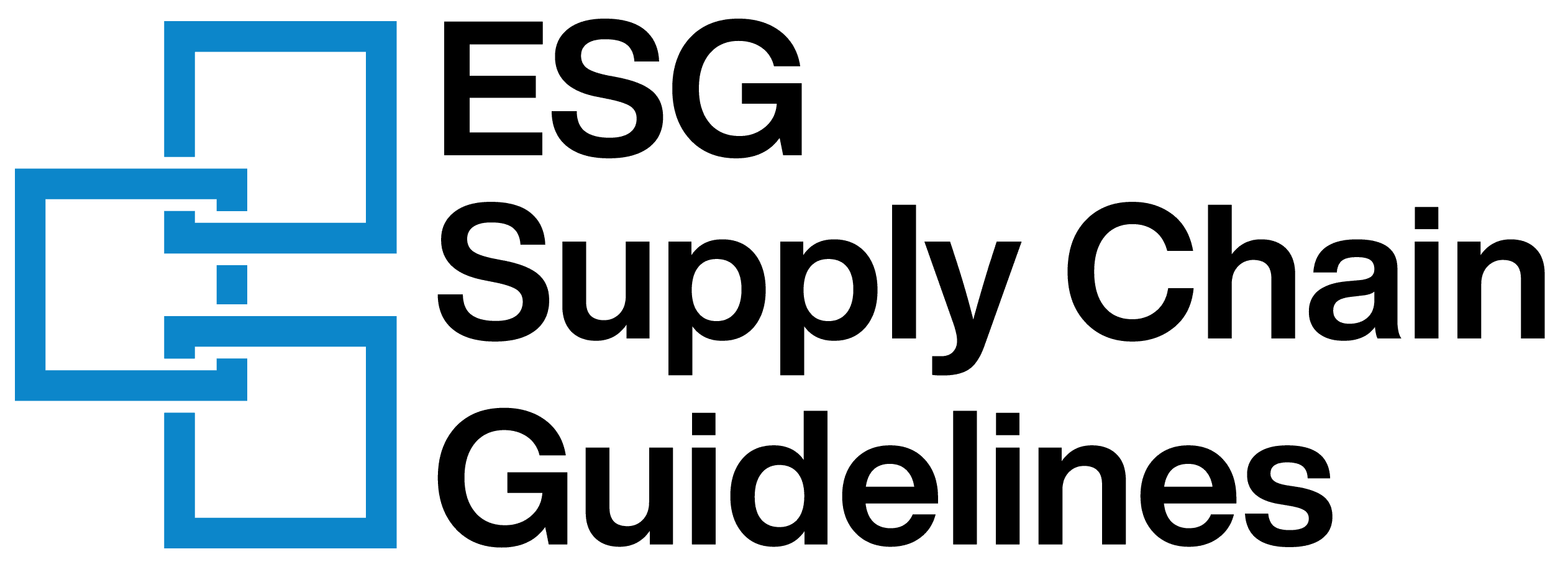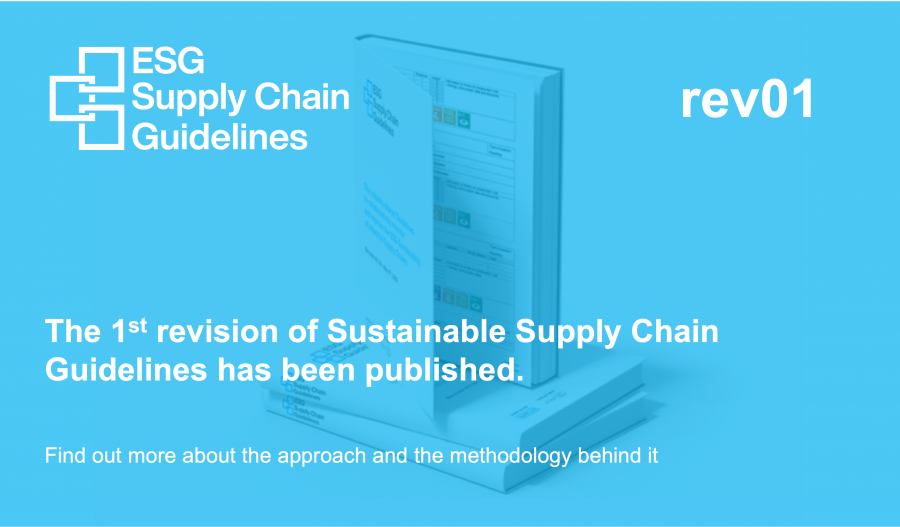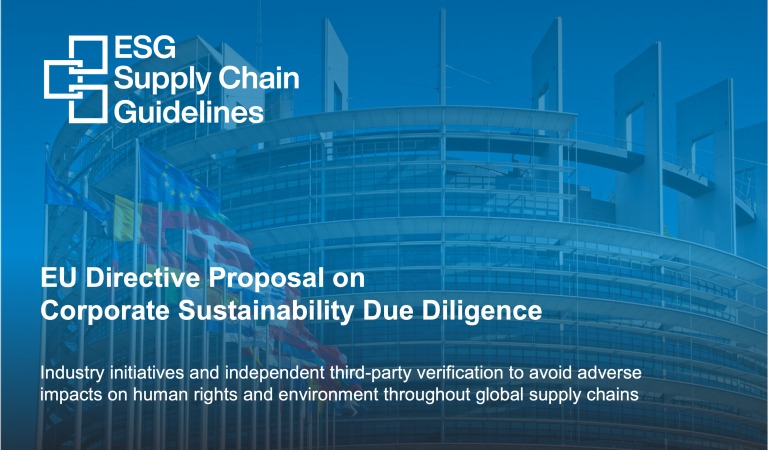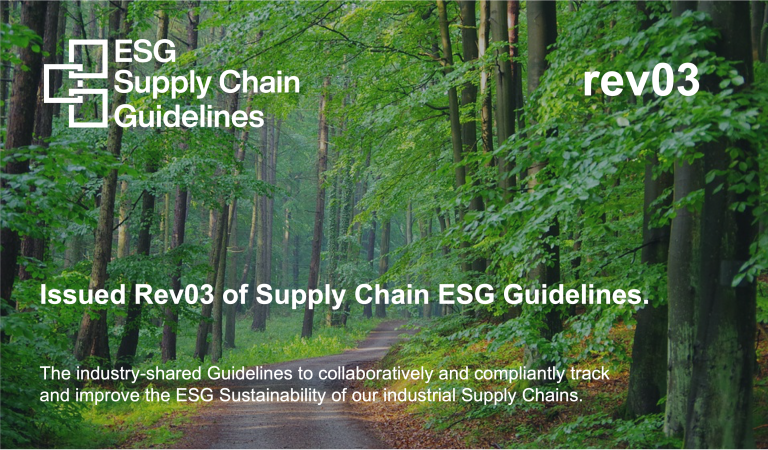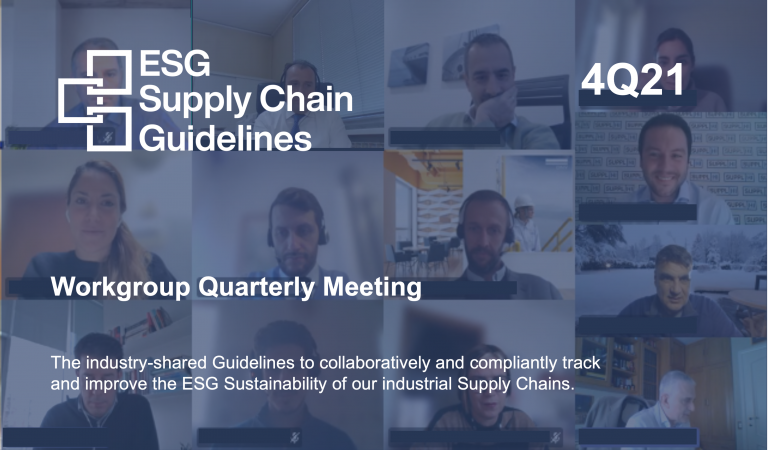THE GUIDELINES
After less than six months from the Kick-Off meeting of the open workgroup for the creation of industry-shared ESG Guidelines, the first official version of the Guidelines was released on February 13, 2020.
This first drafting of the Guidelines saw the participation of 21 members representing international EPC Contactors, Large OEMs and SMEs and other players of the industrial sector, for a total of 14 co-innovator companies representing numerous branches of the industrial sector, such as Oil & Gas, Chemicals, Power, Renewables, Shipbuilding, Steel & Metals, Cement. The hard work put into the drafting of the document by the 14 players resulted in a 65-pages long document organized in 5 main sections.
The objective of the Guidelines – clearly stated in the initial pages – is to
“define the recommended set of information and assessment metrics necessary to assess the Environmental, Social and Governance (ESG) Sustainability aspect of a Supply Chain in the Plant Engineering industries.”
Although ambitious, this goal goes hand in hand with the current global context, where the three main pillars of sustainability – Environment, Social and Governance – are being considered more and more relevant in the evaluation of a business model, becoming not just a core value, but a true asset – although an intangible one. ESG Sustainability has come to represent an added-value opportunity both for differentiating from the global competition as well as for increasing the chances of economic development.
To create common, industry-shared Guidelines means to tackle a core characteristic of the industrial world, i.e., the fact that B2B Industrial Supply Chains have a strong incidence on Buyer organizations, as they can account for up to 80% of Buyers’ revenues and are typically composed of up to 90% of SMEs. Therefore, much as it happens with the Scope 3 Carbon Emissions Estimates, in order to assess a buyer organization’s Sustainability level, it is necessary to constantly monitor the sustainability level of its vendors as well, across the entire supply chain.
THE APPROACH
After the 10 core principles of the Guidelines were defined, ranging from standardization to easy comparability, from constant update to global validity, the workgroup followed a 5-step approach to draft the Guidelines:
1. Mapping existing Sustainability requirements by End-Users to Contractors, international standards and norms, and 100+ international Buyer organizations’ questionnaires on Sustainability;
2. Defining recommended practices – including Assessment Visits – per each category of supplies;
3. Defining metrics for the creation of an industry-standard and industry- shared Vendor Sustainability Score;
4. Exploring the benefits of an industry-shared and constantly updated platform to host information on Vendor questionnaire, Assessment and Sustainability Metrics
5. Designing an approach to provide common guidance on how to improve Vendors’ Sustainability Scores and share recommended practices, with a focus on SMEs.
THE QUESTIONNAIRE
Once the approach was defined and the mapping complete, the workgroup proceeded to create six categories of suppliers, following SupplHi’s Standard Categorization booklet: Critical Equipment, Non-critical Equipment, Construction Services, Fabrication at Yards, Logistics Services, Other Services. Each category of supplies has its own template of questionnaire, although the differences were kept to the minimum, with no more than 30% of the questions per category differentiating from the common template.
The questionnaire and the answers provided by Vendors are hosted on SupplHi (www.supplhi.com), the independent provider of the industry-shared platform. The SupplHi platform:
- cross-checks Vendors’ basic data to avoid any duplicates;
- understands Vendors’ relationships, company structure and operational status;
- collects information on destination of Vendors’ locations;
- tracks provided and missing Vendors’ information;
- notifies Vendors in case provided information is about to expire.
THE ESG METER, THE OUTCOME OF THE ESG SUPPLY CHAIN GUIDELINES
The tool allowing the deployment of the Guidelines and the calculation of the scores is being developed at the time of the first issuance of the Guidelines, but it is planned to be launched in early May 2020. The tool, which will be hosted on the SupplHi platform, will be called “ESG Meter” and will be updated after every new release of the Guidelines, to reflect the latest state-of-the-art described in the document (read more about the second revision of the Guidelines here).
The goal of the ESG Meter is to allow companies to assess their own level of ESG sustainability and compare it with the average level of their industrial category (electrical panels, cables, motors…), and to report the recommended ESG initiatives for improving the companies’ sustainability level. In the words of SupplHi CEO & Director Giacomo Franchini, “the SupplHi SaaS ESG Meter solution will allow buyers and vendors to monitor their ESG performances and to understand how to improve their capabilities”.
THE SCORE
Upon completion of the ESG questionnaire, every Supplier obtains a score of their sustainability level for each one of the ESG aspects – Environment, Social and Governance. The scores are made available on Vendors’ profile in SupplHi platform, on the Vendor’s profile, and are calculated through the ESG Meter. In respect with the transparency and as a testimony of the quality of the obtained scores, Vendors are encouraged to share their ESG scores with their network, also using the dedicated PR kit at their disposal.
The scores are always based on the latest revision of the Guidelines and are expressed on a scale ranging from A (highest evaluation) to E (lowest evaluation) and are made available on the SupplHi Vendor Management platform together with the recommended suggestions to further improve the Vendors’ level of sustainability.
